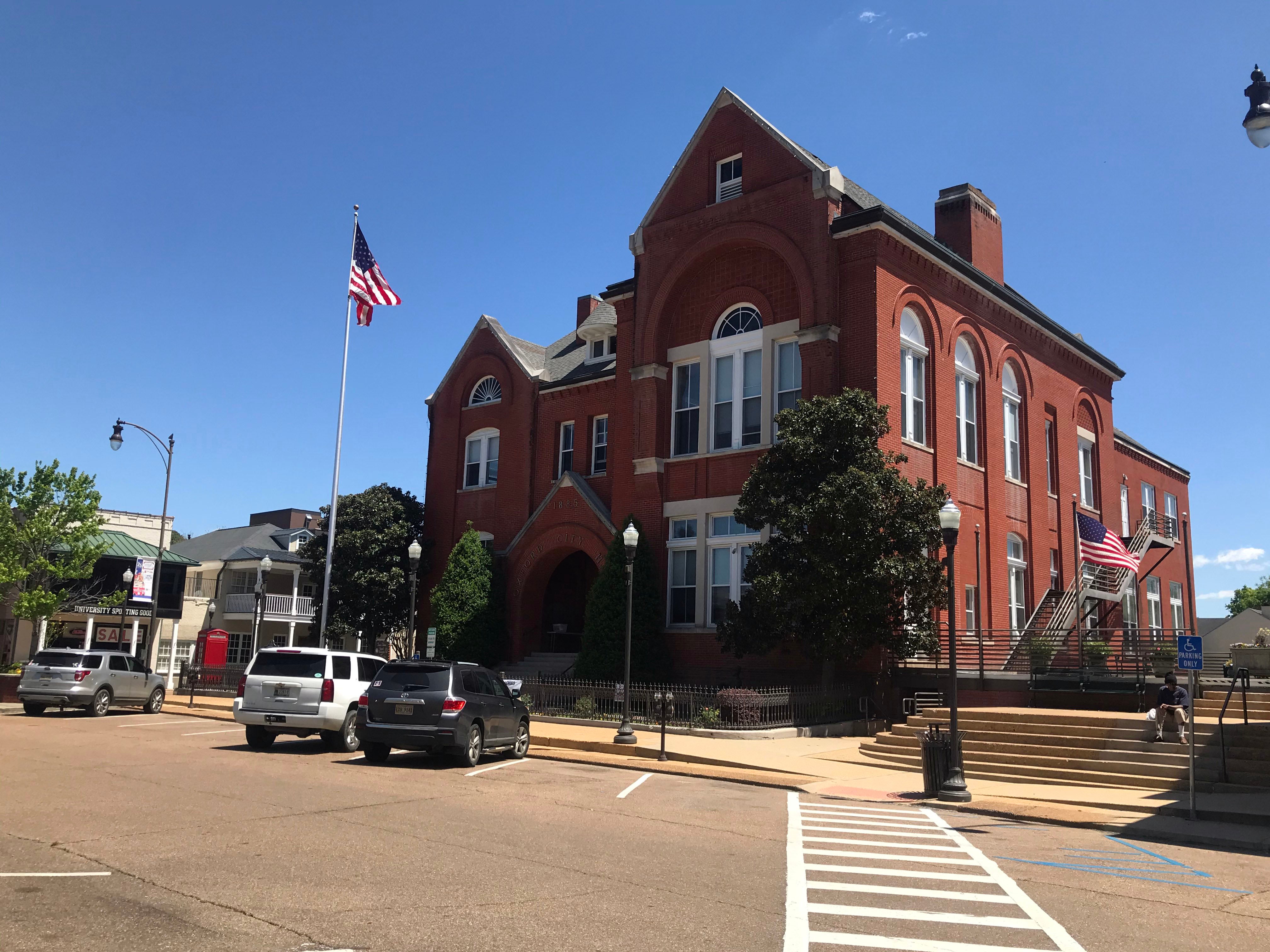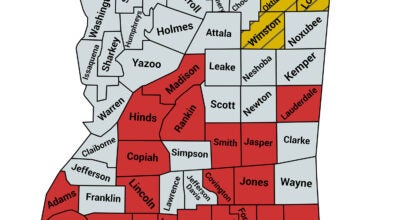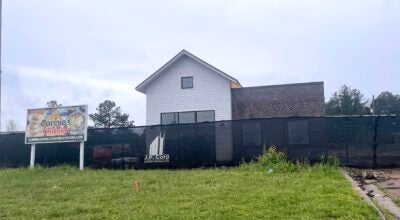Mayor addresses progress with Punkin, county board’s concerns on city expansion
Published 3:49 pm Wednesday, February 16, 2022

- Oxford City Hall on Friday, June 12, 2020. (Jake Thompson/Oxford Eagle)
Mayor Robyn Tannehill took a moment at the Oxford Board of Aldermen’s regular meeting Tuesday evening to address the Lafayette County Board of Supervisors lingering questions about the city’s expansion of services and regulations.
Previously, the city board approved an agreement to acquire Punkin Water Association and its service area and it was approved by the county board as well. The Alderman also approved a resolution supporting a local/private legislation that allows Oxford to expand its service more than five miles outside the city limits, which was approved by the county as well.
Before the mayor presented her comments, Chief Operations Officer Bart updated the Aldermen on local lawmakers and organizations actions regarding PWA.
The COO reported that Representative Clay Deweese dropped a local/private legislation early Tuesday and the results are anticipated to come mid-March. He announced that the PWA’s next board meeting will take place on Feb. 22 at the Chancery Court Building as part of a special meeting.
“At that meeting, through their bylaws, the membership will decide whether or not to move forward with the dissolution and [Oxford’s] acquisition,” said Robinson.
During Tuesday’s meeting, the board approved contracting Daniels & Associates for professional services required to potentially serve the PWA service area.
“At this point, … you hired David Daniels [of Daniels & Associates] to start helping us with some of our due diligence work to figure out what the exact cost will be so we know what rates will be required,” Robinson said. “We’ve started pulling customer information, getting those estimates together and working through the progress.”
“The city has a long-standing policy of making sure that whenever it decides that it’s in the best interest of the city to provide water to residents or developers that are outside of the city’s limits, that those developments are keeping with the city’s subdivision and site plan requirements,” said Tannehill.
The mayor continued to say that if the board is asking city tax payers to pay for improved water systems outside the city’s limits and to become the engine that pushes for “fast and aggressive” growth, their goal is to not harm the county residents and people in fast-growing areas or make assimilating those fast-growing areas difficult.
“To do that would ignore the needs of the water district residents and our own citizens,” said Tannehill.
According to Tannehill, annexation will eventually move out to those areas but the board is not looking to annex another section so soon after the city’s largest annexation in 2018.
Tannehill tackled some of the Board of Supervisors questions regarding Oxford’s regulations being enforced in the county area. If reviewed, the differences between Oxford’s requirements and Lafayette County’s should cause very little concern, according to her.
“I was able to have that conversation [Tuesday] with President of the Board of Supervisors Mike Roberts,” said Tannehill. “Because of the concerns raised, Bart has gone through all of the county’s development requirements, we’ve gone through them together after he reviewed it and we have identified every difference that we could see.”
The mayor listed a highlight of the difference between the city and county development codes for the audience.
Unless developers request a subdivision plat approval or a site plan approval, they will not be asked to follow city guidelines. Individual homes on individual lots/land will not be affected.
Developments affected by city guidelines consist of: any subdivision of property; a development of five or more dwelling units except individual lots that have already been approved; any structures with more than two stories; any commercial development adjacent to properties zoned for residential use; any development located within a floodplain; any development requiring the services of a license engineer or architect; or any open parking area to be constructed or enlarged.
“A person who owns ten acres and they want to build a house and a barn doesn’t have to come before the city to ask anything,” the mayor said.
Tannehill also answered supervisors’ concerns on roadway design, tree mitigation and stormwater management. According to her research, the county’s zone requirements only include curb and gutter for development over three lots and the city does not require tree mitigation. The only true area of concern is the difference in the county and city’s requirements for stormwater management.
“It is my understanding that the county requires a 25-year storm build and [Oxford] requires a build based on a 100-year storm,” Tannehill said. “That’s a pretty big difference and could be considered by this board if they would like to but we know what dealings we’ve had with stormwater and we know why we’ve put that in place.”
Other key differences include requirements for sidewalks and, in some cases, the placement of traffic signals. Tannehill said she and Robinson were unable to find mention of sidewalks in county requirements but it would only affect the previously mentioned developments.
“We will not require streetlights, I should mention, because unless the county does not require streetlights,” said Tannehill. “Unless there’s an HOA area that wants streetlights and will pay for them, we won’t require them because when we require them in developments in the city, the city pays for those streetlights.”
All of the research done by Robinson and Tannehill was presented to Roberts and the board was asked to add an addition to its own ordinance to insure limited and reasonable requirements for orderly developments with the specified projects and site plans in areas that need city water, which they approved.
Tannehill, Roberts, Robinson and the county’s Director of Development Services Joel Hollowell met during a pre-arranged meeting time to further discuss the city and county’s development guidelines together.
“Our goal will be to discuss what the few differences are and come to a mutual agreement of what the city will require of the city residents that live outside the city limits who receive city water,” Tannehill said.
Any changes will be brought before the board for their consideration.





